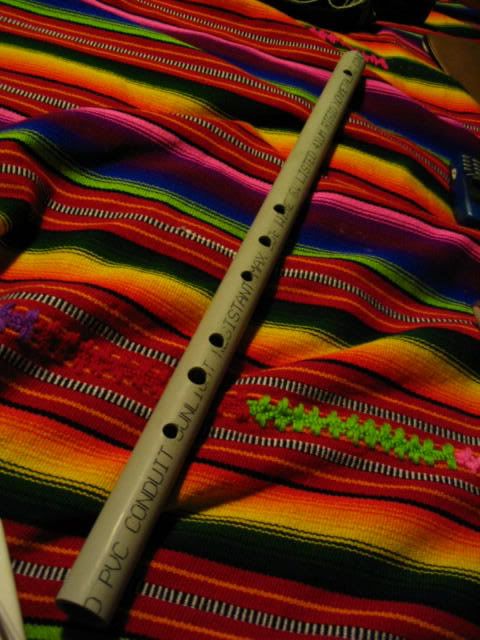Doug_Tipple wrote:Congratulations, Ninajaaron, on your first flutes and on your chromatic modifications. I do have a comment about the gray colored conduit that you are using. I have used this type of electrical conduit, and although the material is somewhat soft, the flutes made from it are not bad but not very loud. However, all pipe sold in the USA has to meet certain ASTM (American Society of Testing Materials) standards, and the standards are different for pipe designed for different uses. You can guess that pipe designed to hold electrical wires would have different standards of purity from pipe certified to carry household drinking water. I think that the white pvc, found in the plumbing section of your home improvement store, is the best for making pvc flutes. It is harder, producing a louder tone, and it feels better in the hands, for reasons having to do with its chemical composition. In my opinion, electrical conduit and cpvc, which contains additional chlorine in the compound, are less desirable for making flutes. When I attempt to play either of these flutes, I can feel a little buzzing in my hands and lips, a sensation that I don't get from the white plumbing pvc, which, like I said before, is my preference. That being said, perhaps I am over-sensitive, for I know that many people play ABS and cpvc flutes and whistles without difficulty.
Thank's for the tip, not to mention the instructions.
I like the sound of the conduit. Of course, I have nothing to compare it to, but it I don't mind the low volume, It's great for practising around the house. Of course, when I get better at playing, I could very well want a louder flute

. (perhaps I will build one). I do like the fact that it's real mellow... But again, I have no point of refernce.
If your back to building flutes yet, I'll probably order a low C with a wedge from you pretty soon. The low C I just tried was a failure. It turned out to be a B with dodgy intonation. Not sure why... something about this hole calculator I think... maybe I'm not using it right... I also drilled the emboucher at angle, which increased the the surface area I suppose (I really don't think that was the issue, however.)
Thanks again Doug.
